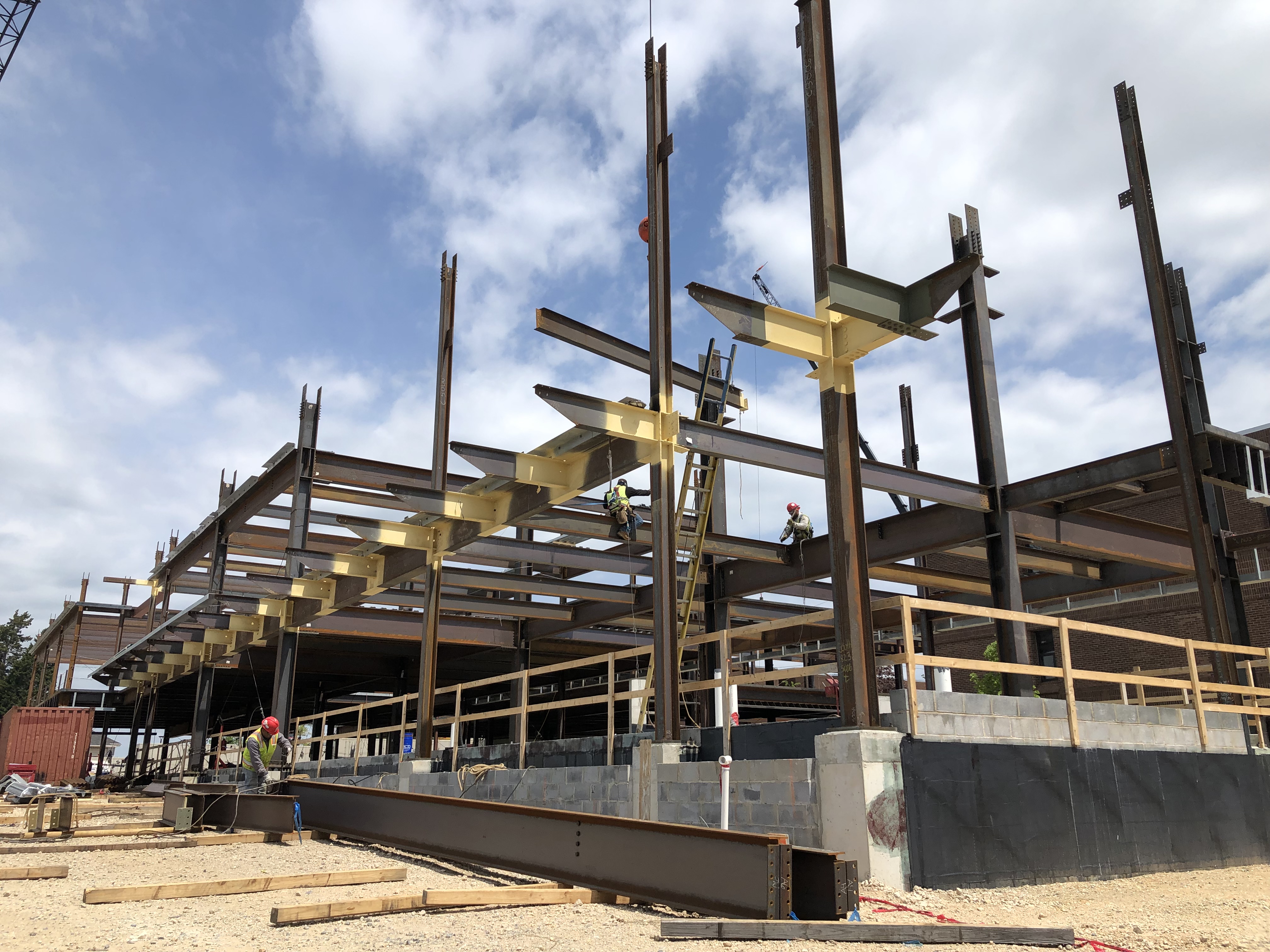
Mitigating Thermal Bridging with Fluid Applied Thermal Break Coatings
Simplify thermal break design with fluid applied thermal break coatings.
- High Performance Coatings
A thermal bridge occurs when a conductive building material bypasses a building’s thermal envelope without separating or breaking the component from conditioned to unconditioned space.
One of the more common locations for thermal bridging to occur is steel that bypasses the thermal envelope on the vertical wall for canopies, overhangs, and cantilevers and through the roof enclosure for mechanical screens, mechanical dunnage, and roof davits. Other areas of concern are continuous pour concrete balconies and architectural offsets.
Thermal bridges reduce the overall R-value of the wall assembly and create locations inside of the building envelope for condensation to occur. Condensation occurs when surface temperature drop below the dewpoint. A building that is conditioned at 70F⁰ and 40% RH has a dewpoint of 44F⁰. Any building component inside of the buildings envelope that drops below this temperature will develop condensation. At this temperature, the moisture in the air will condense into a liquid on the surface. Condensation inside of the wall cavity or roof assembly will lower the R-value of the wall and can lead to mold growth and rot.
Fluid applied thermal break coatings are an excellent solution to managing the surface temperature on thermal bridge locations and maintaining surface temperatures above the dew point. Tnemec Aerolon is the industry leading fluid applied thermal break material with a k-value under 40 mW/mK. The extremely low thermal conductivity of this material slows thermal transfer helping to keep surface temperature above the dew point which mitigates the possibility for condensation formation.
A typical Tnemec Aerolon detail is shown below on a vertical wall with the detail extending 18” – 24” on either side of the thermal envelope.

(Photo Credit: Atlantic Coating Consultants)
Another common detail where fluid applied thermal break coatings are used is steel that penetrates the roof envelope. The detail below highlights this simple solution to a common thermal bridge location.

(Photo credit: Righter Group, Inc)
Fluid applied thermal breaks provide a cost effective thermal break solution compared to conventional thermal break pads. The spray applied material simplifies the thermal break detail by eliminating the need for extra steel fabrication, special bushings and washers, and additional structural engineering detailing.
Contact you local high-performance consultant to learn more about how you can incorporate fluid applied thermal breaks into your projects envelope design.
Check out our other resources on this topic:
Does formulation and product performance matter?
Writing performance based coating specifications
How Do High Performance Coatings Differ From Regular Coatings, or Paint?
What Considerations Should an Architect Make Before Spec'ing Coatings
Preventing Condensation in Food Plants
Don't miss these Aerolon project profiles
Don't miss these project profiles:
Glenaire Thermal Break Balcony Project
Sheetz Corporate Center Fluid Applied Thermal Break

Ultimate Guide to Surface-Tolerant Epoxy Coatings
Discover the resilient world of surface-tolerant...

Surface Tolerant Coating Applications
Surface Tolerant Coatings Benefits for Corrosion...

Comparing Structural Epoxy to Other Repair...
Structural epoxy and cementitious repair...